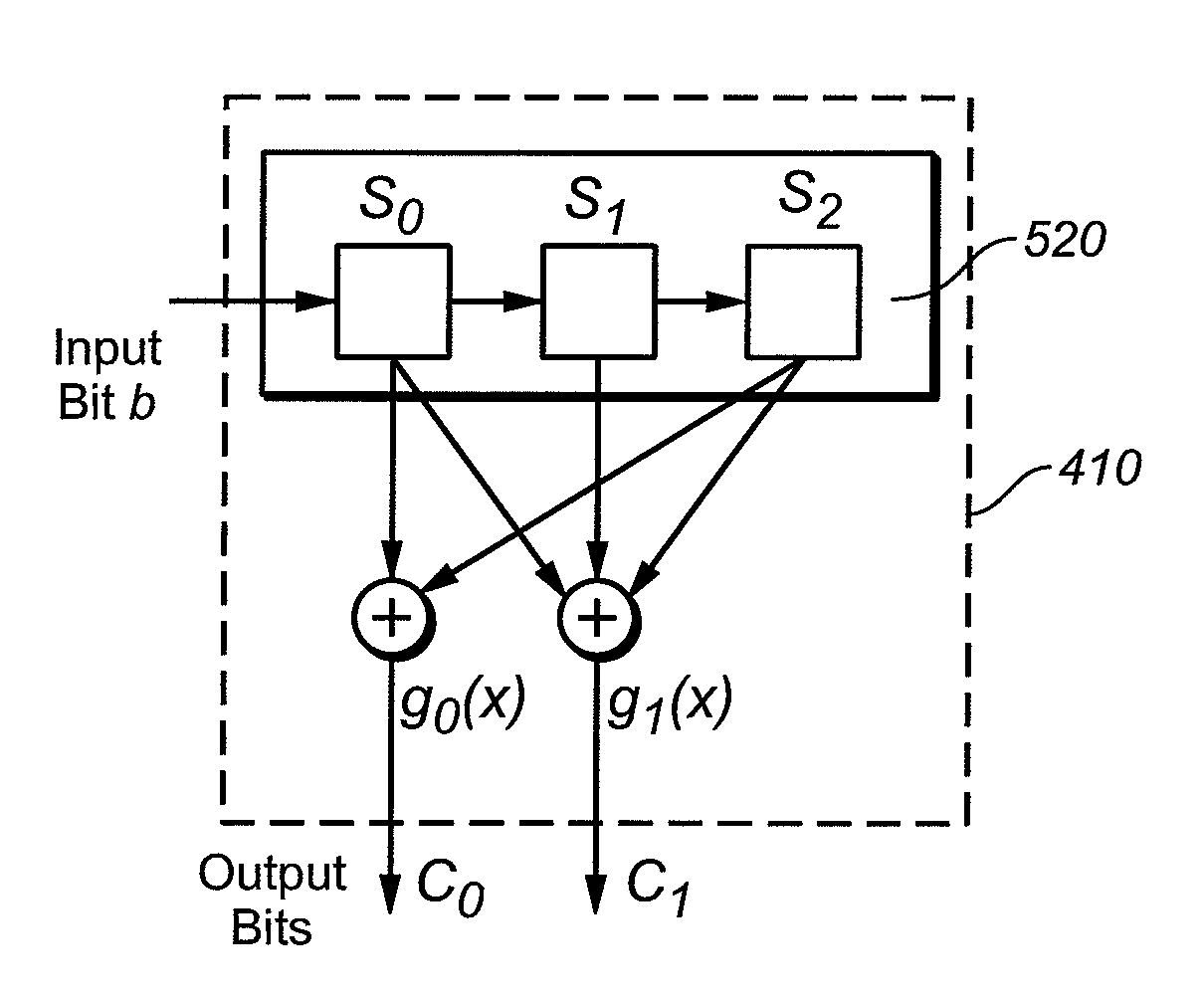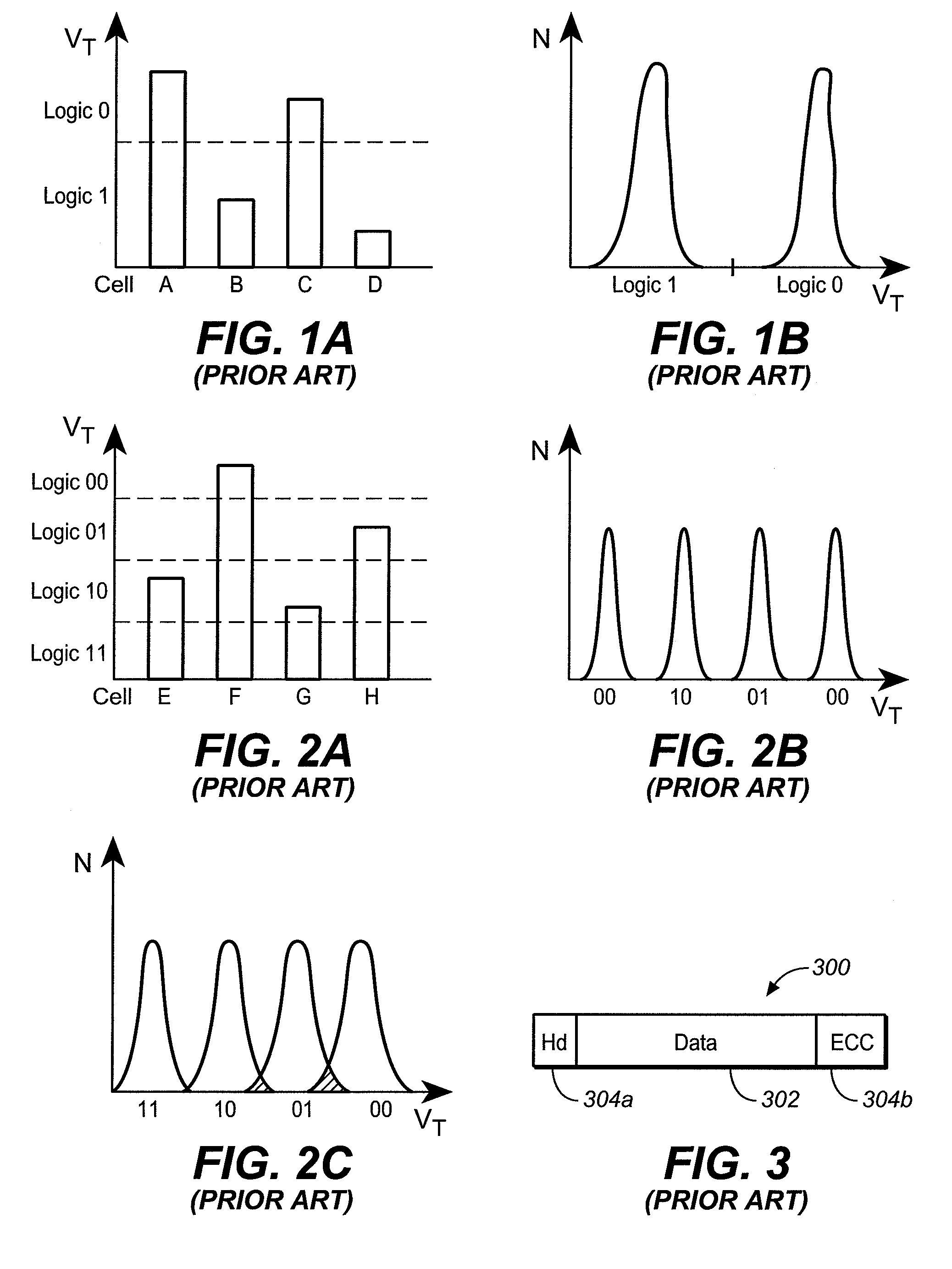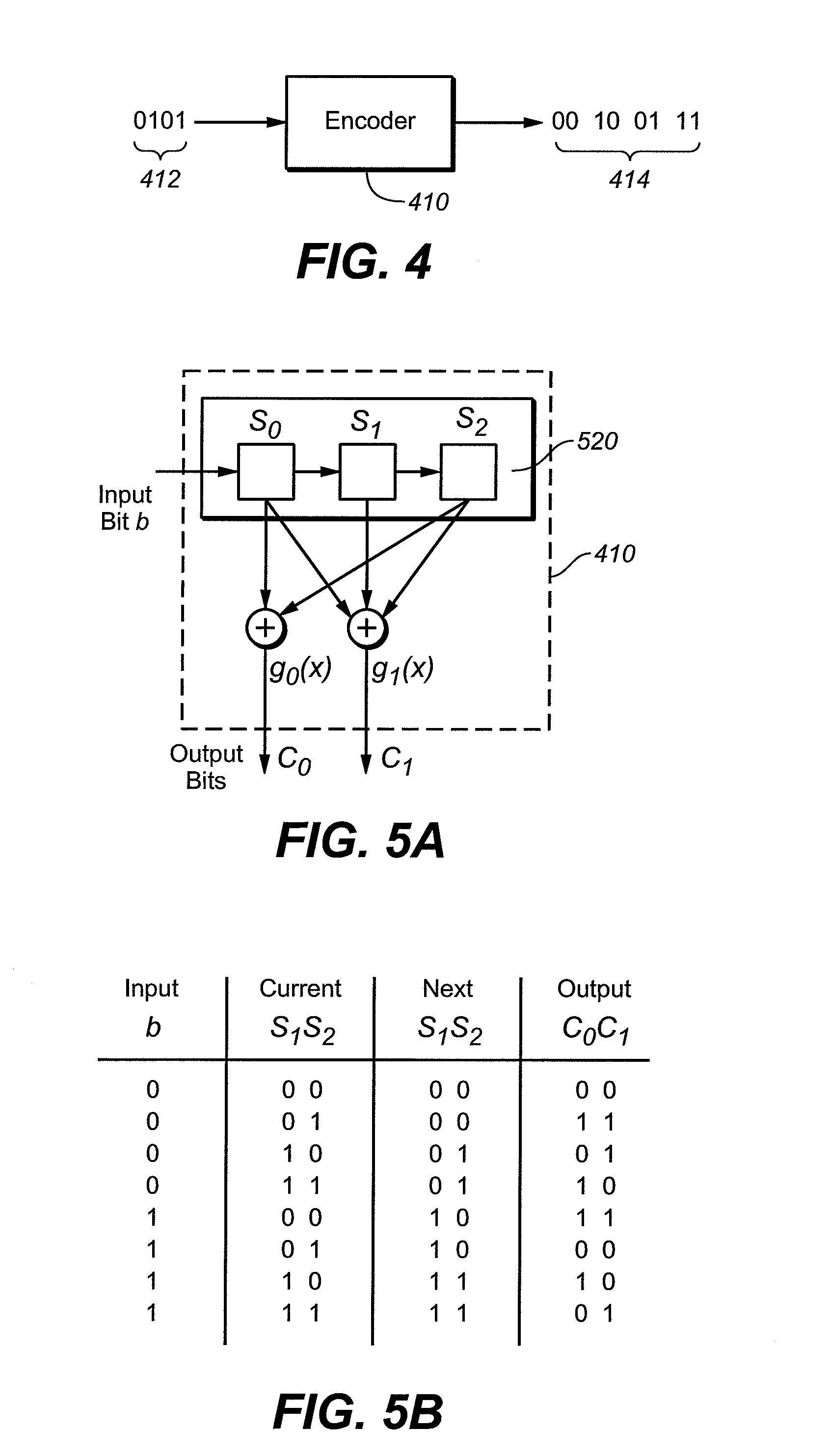Convolutional Coding Methods for Nonvolatile Memory
a nonvolatile memory and coding technology, applied in the field of nonvolatile memories, can solve problems such as errors, and achieve the effects of increasing the maximum number of detectable and correctable errors in a portion of data, and increasing the hamming distan
- Summary
- Abstract
- Description
- Claims
- Application Information
AI Technical Summary
Benefits of technology
Problems solved by technology
Method used
Image
Examples
Embodiment Construction
[0032] According to an embodiment of the present invention, input data are encoded in a manner that allows a high level of error detection and correction. Thus, data may be stored using a number of logical states per cell that provides a significant number of misread bits of data when the data are read. In one example, convolutional coding is used to generate encoded data from unencoded data, where a bit of encoded data depends on more than one bit of unencoded data. Generally, in convolutional coding, each m-bit symbol (each m-bit string) is encoded into an n-bit symbol, where m / n is the code rate (n≧m) and the transformation is a function of the last k symbols received, where k is the constraint length of the code. Convolutional coding may be used with relatively low coding rates to allow a high level of error correction. This may allow a memory array to be used even where a lot of data is misread from the memory array.
[0033] While storing data with a low coding rate requires sto...
PUM
 Login to View More
Login to View More Abstract
Description
Claims
Application Information
 Login to View More
Login to View More - R&D
- Intellectual Property
- Life Sciences
- Materials
- Tech Scout
- Unparalleled Data Quality
- Higher Quality Content
- 60% Fewer Hallucinations
Browse by: Latest US Patents, China's latest patents, Technical Efficacy Thesaurus, Application Domain, Technology Topic, Popular Technical Reports.
© 2025 PatSnap. All rights reserved.Legal|Privacy policy|Modern Slavery Act Transparency Statement|Sitemap|About US| Contact US: help@patsnap.com



